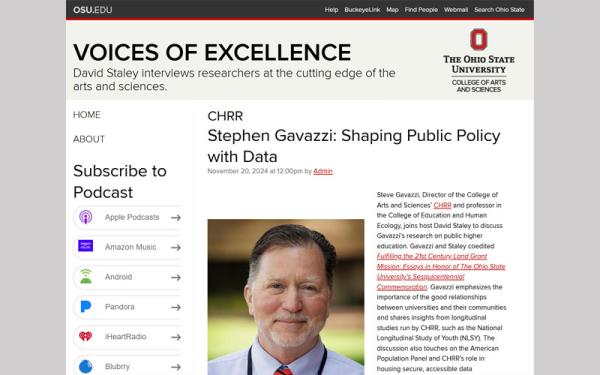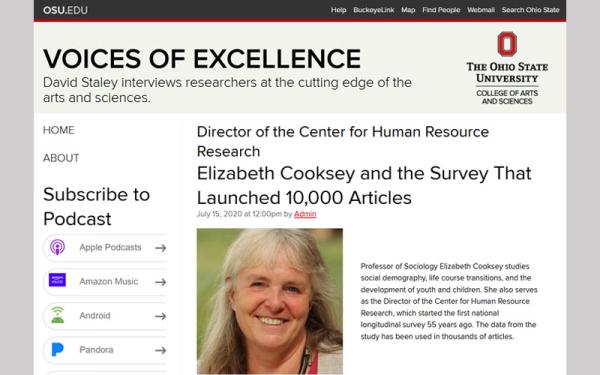We are often asked about our name and what it stands for. CHRR was founded in 1965 as the Center for Human Resource Research. We changed our to-do-business name to CHRR at The Ohio State University. As the meaning of human resources has evolved over time, we remain committed to our mission of studying an array of socioeconomic factors through survey research and the organization and dissemination of administrative data. Today, we use CHRR at The Ohio State University to emphasize our connection with one of the nation’s leading research universities as we provide survey and data services for researchers worldwide.
CHRR Directors
1965— Herbert Parnes and Samuel Clifton 'Clif' Kelley, co-directors
1977— Michael Borus
1985— Ken Wolpin
1987— Randall Olsen
2015— Elizabeth Cooksey
2021— Stephen Gavazzi (Interim)
2022— Stephen Gavazzi
Current director, Dr. Stephen M. Gavazzi, and his predecessor, Dr. Elizabeth Cooksey, have been featured on Voices of Excellence, a podcast showcasing faculty within the College of Arts and Sciences at Ohio State. In their interviews, Gavazzi and Cooksey discuss CHRR’s projects, services, and areas of expertise. Click the links below to listen to each of their Voices of Excellence episodes.



